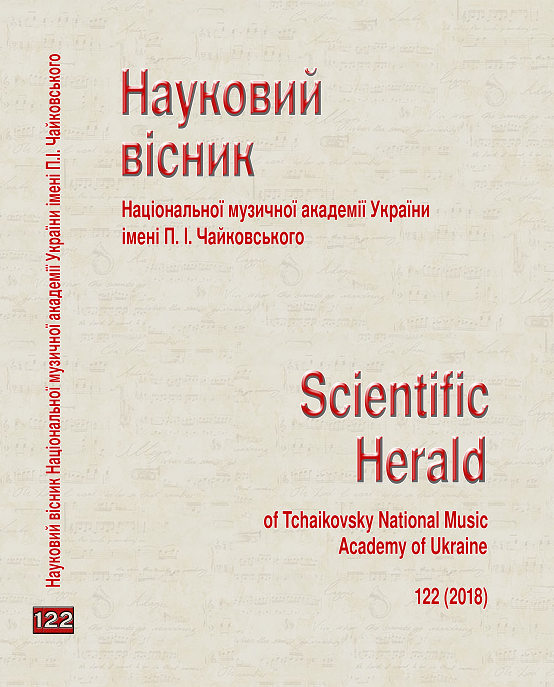Three More drops in the sea of searches of musical sense
DOI:
https://doi.org/10.31318/2522-4190.2018.122.141859Keywords:
the work of F. Chopin, preludes, cycle, musical sense, creative concept, golden ratioAbstract
Relevance of the study. The discovery of new depths and semantic horizons of purely musical content, which open as you immerse in the complex compositional secrets of the work, significantly extends the boundaries of its understanding. And the relevance of this aspect of musical analysis is undeniable, especially – the paradox! – in cases when it comes to such famous works as the Preludes of Frederic Chopin. The main objective of the study, which is based on the analysis of three preludes (Nos. 2, 15 and 24) in the context of the cyclic composition op. 28 F. Chopin, is the study of the semantic links essential for understanding this cycle – the conditions for the existence of this particular musical work. Methodology. Structural and functional music-theoretical analysis of the cyclic composition (in particular, its most important semantic points) is carried out using original author's methods.
Results and conclusions. Even the analysis of only three preludes in this context, aimed at the integrity of the cycle, demonstrates both the significance of these semantic points themselves and the apparent presence of undoubtedly more important and fundamental connections – the bearers of a more profound author's musical meaning. The most important conclusion is that the 24 Preludes by F. Chopin can indeed be performed, perceived, and also explored by “parts” (such practice is an established tradition), but the real, purely musical meaning of all plays can be realized only in comprehension of unity cyclic composition and understanding of the whole cycle as a single and autonomous opus perfectum et absolutum. The practical significance of the article lies in the necessary rethinking of the understanding of the integrity of the piano cycle of Preludes by F. Chopin, the structural and functional meaning of purely musical events within the cyclic composition, which illuminate many of the well-known moments of the works of F. Chopin in a new light and, in general, demonstrate the significance of the semantic unity of the creative design of the whole cycle.
References
Kovalinas, M. (2003), “Three drops in the sea of searches of Musical Sense”, Naukovyj Visnyk Nacionaljnoji muzychnoji akademiji Ukrajiny imeni P.I.Chajkovsjkogho [Scientific Bulletin of the National music academy of Ukraine named after P. I. Tchaykovsky], vol. 27, Kyiv, pp. 85-94 [in Ukrainian].
Kudryashov, A. (2006), Theory of musical content: Artistic ideas of European music of the 17th-20th centuries, Izdatelstvo “Lan”, Saint Petersburg, 432 p. [in Russian].
Mazel, L. (1971), Researches about Chopin, Sovetskiy kompozitor, Moscow, 320 p. [in Russian].
Cherednichenko, T. (1989), Tendencies of modern Western musical aesthetics: To the analysis of the methodological paradoxes of the science of music, Muzyika, Moscow, 223 p. [in Russian].


